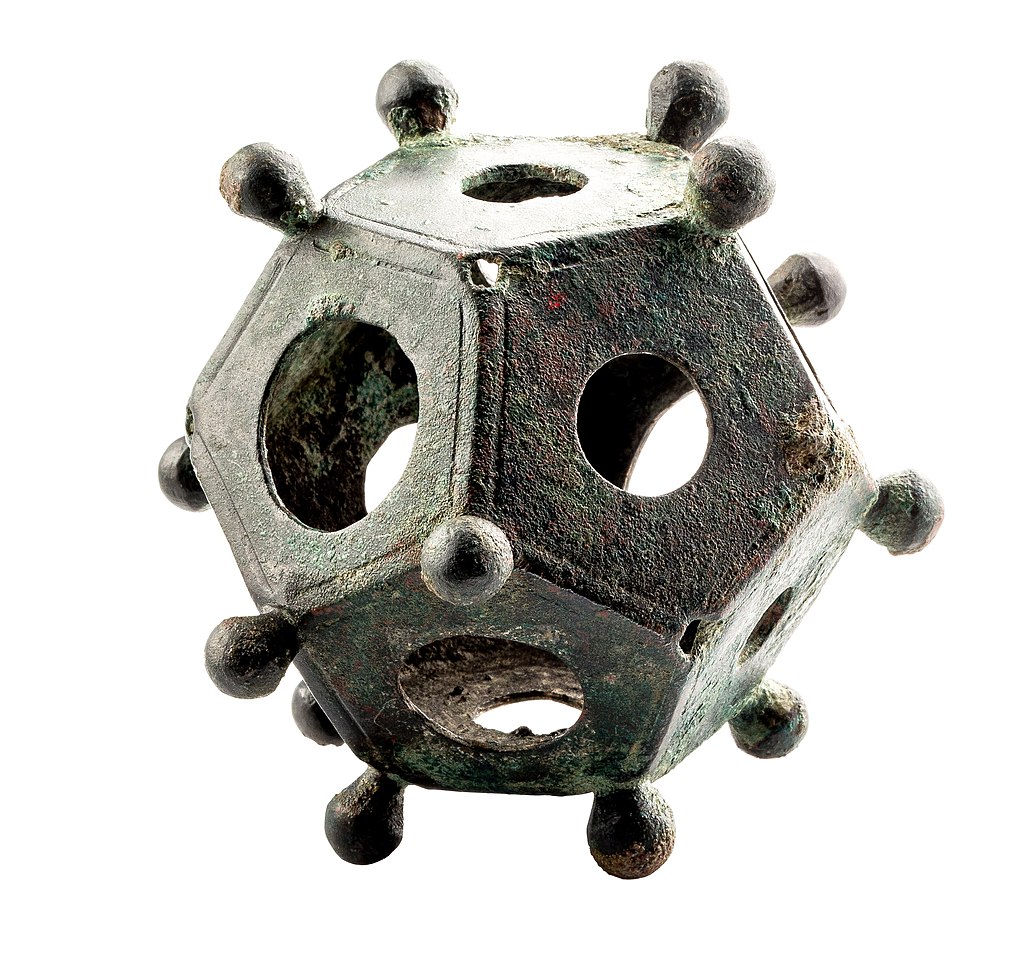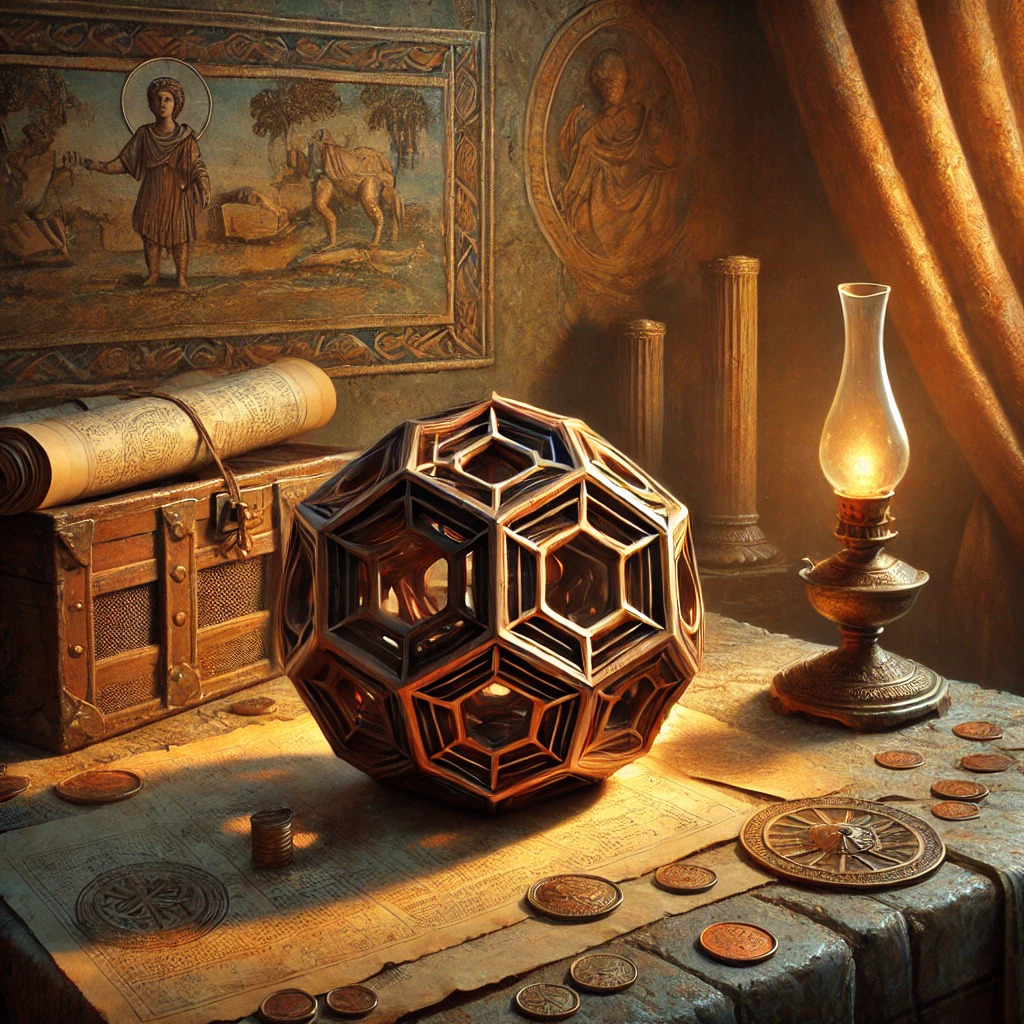The Unsolved Mystery of the Roman Dodecahedron
Among the many unsolved archaeological mysteries, few are as intriguing as the Roman Dodecahedron. These small, hollow bronze objects, dating from the 2nd to the 4th century AD, have been found across northern Europe, yet their function and purpose remain unknown. Unlike other Roman artifacts, no written record or description has ever been found, leaving historians and researchers to speculate about their possible uses.
A Unique Geometric Shape
Each Roman Dodecahedron is a twelve-sided polyhedron, featuring pentagonal faces with circular holes of varying diameters. These holes are connected to a hollow interior, and at each vertex, there is a protruding metal knob. The size of these objects varies from 4 cm to 11 cm, and their weight can range from 35 grams to 1,000 grams. Most are made of bronze or other copper alloys, though a rare silver dodecahedron has also been discovered.
Interestingly, they do not show signs of wear and lack any inscriptions, numbers, or symbols, making it even harder to determine their original purpose.

Source - Wikipedia
Where Were Roman Dodecahedra Found?
Since the first discovery in 1739, over 130 Roman Dodecahedra have been unearthed in countries such as France, Germany, Belgium, Austria, Switzerland, the Netherlands, Hungary, Luxembourg, and the UK. However, none have been found in Italy, the heart of the Roman Empire.
The most recent discovery occurred in 2023, when amateur archaeologists found a remarkably well-preserved Roman Dodecahedron in Norton Disney, Lincolnshire (UK). This object is currently on display at the Lincoln Museum until October 2024.
Theories About the Roman Dodecahedron's Purpose
Over the centuries, scholars have proposed more than 50 different hypotheses about the Roman Dodecahedron’s function. Here are some of the most popular theories:
- Astronomical Instrument: Some suggest it was used to measure the position of the sun or calculate distances between objects. However, the lack of any standardized markings contradicts this idea.
- Knitting Tool: Another theory claims it was used for spool knitting to create gloves, but no historical evidence supports this.
- Religious or Ritual Object: Some believe it was part of Gallo-Roman religious practices or even a fortune-telling device. Many have been found in sacred or funerary sites, supporting this theory.
- Military or Tactical Device: Another suggestion is that the Roman Dodecahedron was used for military calculations or even as a type of measuring instrument.
- Coin Measurement Tool: The fact that several were found in coin hoards suggests they may have been used to verify the size of Roman coins.
- Weapons or Projectiles?: Some early historians proposed that the Roman Dodecahedron was part of a weapon, like a mace head or a sling projectile, but their light weight makes this unlikely.
Similar Objects and Possible Connections
Another fascinating discovery is the Roman Icosahedron, a similar artifact with 20 faces, found in Germany and currently displayed at the Rheinisches Landesmuseum Bonn.
Additionally, small gold dodecahedra with similar knobs and holes have been found in Southeast Asia along the Maritime Silk Road. Some of these date back to the Roman period, suggesting a possible cultural or trade connection between Rome and Asia.
An Unsolved Mystery That Continues to Fascinate
Despite extensive research, the Roman Dodecahedron remains one of the greatest unsolved mysteries of archaeology. Whether it was a scientific tool, religious artifact, or a completely unknown object, its true purpose is still hidden in history.
If you are intrigued by historical enigmas, you can see one for yourself at the Lincoln Museum in the UK or the Rheinisches Landesmuseum Bonn in Germany.
One thing is certain: the Roman Dodecahedron will continue to fascinate scholars and history enthusiasts for years to come.








Leave a Comment